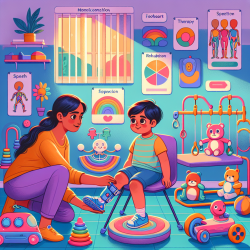Speech articulation in children is a pivotal aspect of their communication development, influencing not only their ability to express thoughts and needs but also impacting their social interactions and academic performance. A recent study by Shelton, Spier, and Lewis (1984) sheds light on the effectiveness of certain techniques aimed at improving speech articulation among children. This blog post aims to translate these findings into actionable strategies for practitioners and encourages further exploration into speech pathology research.
The study focused on children aged four and five who inconsistently misarticulated sounds, particularly /s/ and the "r" family of sounds. Researchers implemented a technique where children were asked "What?" following a misarticulation, with the aim of prompting the child to correct their articulation. Interestingly, the study found that this questioning technique had little impact on the children's ability to correct their misarticulations immediately after being questioned.
Despite the technique's limited immediate effectiveness, the research offers valuable insights into speech therapy practices. Here are some strategies practitioners can derive from the study:
- Increased Awareness: Helping children become more aware of their articulation errors is crucial. While the "What?" technique did not significantly improve immediate articulation, the concept of drawing attention to misarticulations remains valuable. Practitioners might consider alternative methods to increase awareness, such as video recordings or mirror exercises.
- Customized Feedback: Providing specific, tailored feedback might be more effective than general questioning. For instance, rather than asking "What?", therapists could specify the misarticulated sound and ask the child to focus on correcting that particular sound.
- Engagement in Problem-Solving: Encouraging children to engage in problem-solving when they encounter communication failures can promote self-correction. Activities designed to create a need for clear communication can motivate children to adjust their articulation.
- Use of Homonyms and Phonemic Contrasts: Building on previous research cited within the study, employing homonyms and phonemic contrasts can encourage children to articulate more clearly to convey the intended meaning. This approach aligns with the broader concept of conceptual therapy, emphasizing understanding and use over mere repetition.
Furthermore, the study highlights the importance of considering individual differences in children's speech development. The effectiveness of any technique may vary based on factors such as the child's age, the specific sounds they struggle with, and their cognitive and linguistic development level.
For practitioners looking to refine their therapy techniques, this research underscores the necessity of a tailored, child-centric approach. Experimentation with different strategies, combined with consistent monitoring and adjustment, can enhance speech articulation outcomes.
Finally, this study serves as a reminder of the value of ongoing research in speech pathology. By staying informed about the latest studies and integrating new findings into practice, therapists can continuously improve their effectiveness and support children's communication development more efficiently.
To read the original research paper, please follow this link: Misunderstanding of Children's Speech: Its Relationship to Articulation Change.










